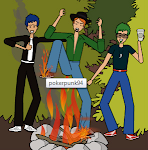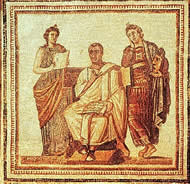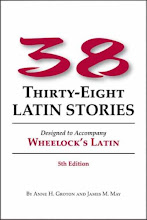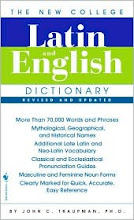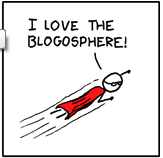Website of the Gods!!!
This is a blog of the gods, Ancient Rome, the Gallic Wars, translations, and other Latiny stuff!
Wednesday, September 8, 2010
"The Second Coming"-A Formal Analysis
The title of the poem is "The Second Coming,” by W.B. Yeats. The themes are those of revelation, destruction, and the apocalypse. The setting of this poem is the Earth. The poem states no time, but while it was being written, Yeats thought that the world was on the threshold of an apocalyptic moment. The narrator is implicit and is third person omniscient in the first stanza, and is first person in the second stanza. It is a single person. The poem seems to equate the narrator and the author in the second stanza. The implied reader is the assumed audience. The characters in the poem include the falcon, the falconer, the best, the worst, a shape with a lion body and the head of a man, desert birds, a rough beast, and the narrator. All the characters have no agency, excluding the narrator, who is the only character to speak and act in their own right. Otherwise, the characters are just reported on. The mood of the poem is somber and serious throughout the poem. The poem describes the whole world. The world has been rotting before the poem started, and seems about to end. A question ends the poem, asking whether or not the world will be saved or left to destroy itself. The ending seems to anticipate that the world will be saved. The poem holds many allusions. The gyre in line 1 refers to another of Yeats’ poems, in which two cones make up history, and an apocalyptic moment occurs, as history switches cones. Lines 7 and 8 are a paraphrase of Prometheus Unbound, a book which Yeats regarded with religious awe. The revelation and Second Coming cited in the poem allude to the Book of Revelations in the New Testament of the Bible and the Second Coming of Christ, respectively. The Spiritus Mundi refers to a belief of Yeats’ that each human mind is linked to a single vast intelligence. The shape with a lion body and the head of a man referred to the sphinx, who guards the gates of Thebes. The rough beast slouching to Bethlehem to be born is Christ, and gives hope at the end of the poem. All of these allusions reinforce the explicit meaning, except the allusion to Jesus. This final allusion subverts the explicit meaning, giving hope that perhaps the world will not fall into oblivion.
Subscribe to:
Comments (Atom)
